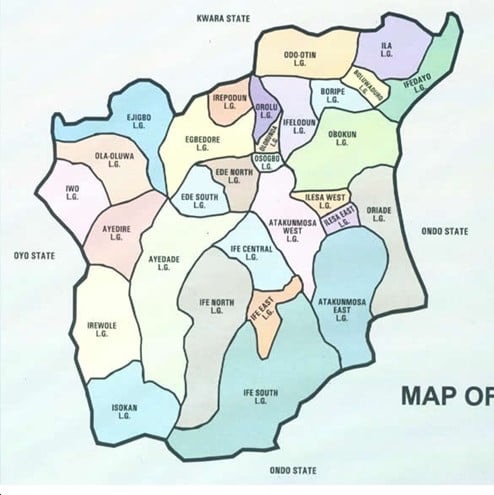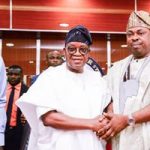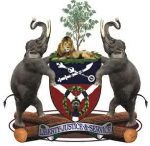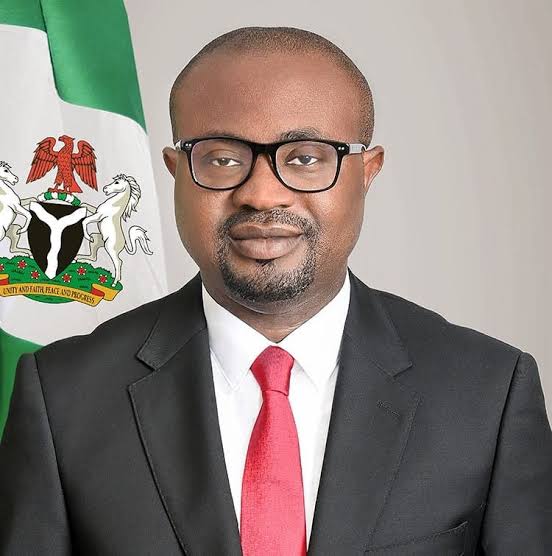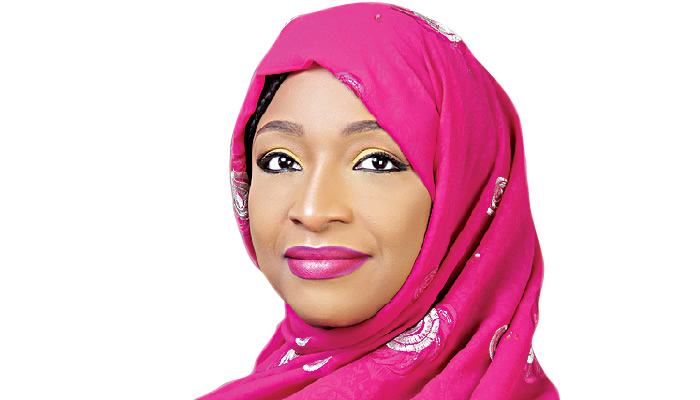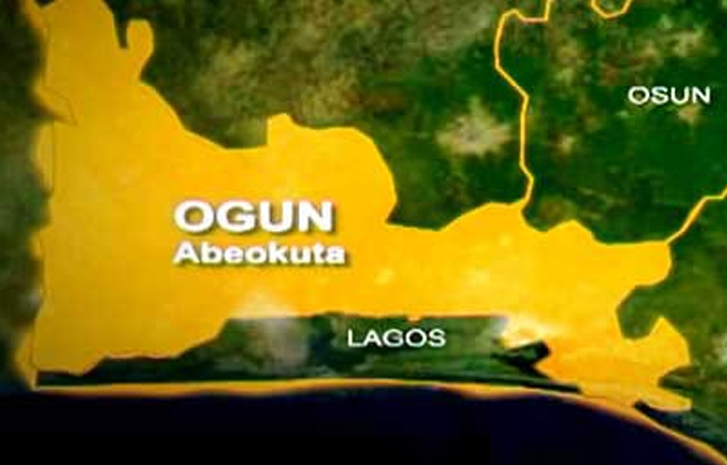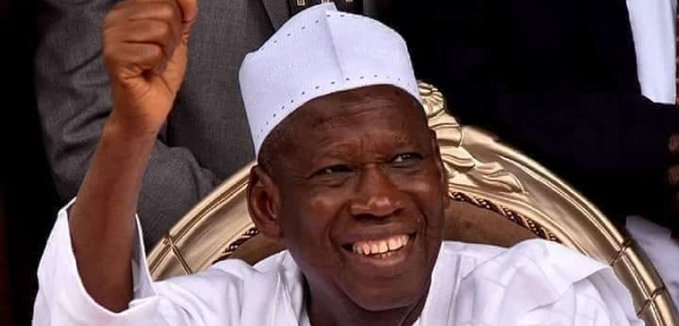Yesterday, August 27, 2020 was epochal in many respects. Not only did the State of Osun mark the 29th year of its creation, it also launched its way formally into the journey of its fourth decade; heralding radiance of brighter hopes and opportunities. NIYI OLASINDE chronicles the events of the state’s annals and milestones, beaming searchlight on the way forward to its future prospects.
August 27 of every year is remarkable in history for a people. That day, in history, marks date in the life of the State of Osun, which has the appellation of the State of the Virtuous (which translates into Ipinle Omoluabi in our indigenous language). Exactly on that date in 1991, the state was carved out of the old Oyo State, which was indeed one of the largest states in the federation as of the time. The new creation was widely accepted. This is so, not only because agitations and demands for an Osun state had begun to be clamoured in decades previous; but also because it had become a topmost necessity to give a fresh lease of life to a people whose continued abode in an old, 42-local-government state was reaching a head in discomfort, marginalization and deprivation.
We would recall that the State of Osun, nicknamed initially as the State of the Living Spring, came into existence on Tuesday, August 27, 1991. This year makes it exactly twenty-nine (29) years that the state was created. The name Osun derived from the personality of the Osun goddess.
The founding fathers of a new dream-state were full of expectations that a newly emerging geographical, political and socio-economic expression would, in no small measure, better cater for the welfare, yearnings and aspiration of a people who are by far advanced in progressivism and those of their offspring and future generations.
Prior to the eventual creation of the state, the name Osun had long been an identity for the people in this part of the old Ibadan Province of the then Western Region. That development earned the people of the area their identity as Osun people. Going by this record, it becomes clear that Osogbo had a long record and reputation of sub-provincial headquarters, commercial hub and haven of culture. This implies that the city had for long been destined for greatness, especially as the host to the administrative headquarters of a state. Unfortunately, this her envisioned greatness could not be fully accessed until a state of her own was created, barely fifteen years after it was created into the old Oyo State (since 1976).
On August 27, 1991, President Ibrahim Babangida announced, in a nationwide presidential broadcast commemorating the sixth year anniversary of his regime, the creation of nine (9) new states, accompanied by necessary boundary adjustments. On that date, Nigeria became a thirty (30)-state federation. The states such created were Kogi State, created from the old Kwara and Benue states; Yobe State, created from the old Borno State; Adamawa and Taraba states, created from the old Gongola State; and Kebbi State, created from the old Sokoto State. Also created were Enugu State, created from the old Anambra State; and Abia State, created from the old Imo State. Others such created were Jigawa State, created from the old Kano State; Edo and Delta states, created from the old Bendel State; and finally the State of Osun, created out of the old Oyo State, which in turn was part of the old Western Region that became Western State by the twelve-state structure brought about by General Yakubu Gowon in 1967.
On Tuesday, August 27, 1991, it was jubilations galore throughout the streets of cities, towns and villages located within the precincts of the areas hitherto known as Osun, Ife/Ijesa and Osun North-East divisions of the old Ibadan Province (or the old Western Region/Oyo State). The jubilations were over an issue which had been pursued by the people since the 1940s. The pursuance was for self-expression, self-identity and self-governance.
The State of Osun covers an area of approximately 14,875 square kilometers, lies between longitude 04 00″E and 05 05″E and latitude 05 558″ and 0807″ and is bounded by Kwara State in the North, Ekiti and Ondo States in the East, Oyo State in the West and Ogun State in the South. The state is peopled entirely by the Yoruba-speaking people of several sub-ethnic groups, namely the Ifes, the Ijesas, the Oyos, the Igbominas and the Ibolos. Though the Oyos, Ibolos and Igbominas are often referred to (most sarcastically) as the Oyo Proper.
At the time of the creation of the State of Osun, the old Oyo State had as constituents a total of 42 local government council areas.
However, the number and impact of these local government areas did not deter the founding fathers of the emerging “Osun State” from carrying on the struggle for the actualization of the establishment of their own state. Let it be made known in passing that the struggle for the creation of a state called Osun predated Nigeria’s independence in 1960. The credit and glory for its eventual creation; therefore transcend what could be ascribed only to those who lived to witness its actual creation in 1991. It involves a large number of others who were long-gone before its actual creation saw the light of day.
With the state creation of 1991, the infant Osun State, had 22 of the forty-two (42) first-generation local government council areas that had first existed; while the remaining 20 went to the emerging Oyo State. The first set of local government council areas which fell on the soils of the new Osun State were Ayedaade, Ayedire, Atakunmosa and Boripe. Others were Ede, Egbedore, Ejigbo and Ifelodun local government council areas. It also included Ife Central, Ife North, Ife South, Ila, Ilesa, Irewole, Irepodun and Iwo. Also, Obokun, Odo Otin, Ola Oluwa, Olorunda, Oriade and Osogbo were among the councils in the new Osun State. Its sister-state, Oyo, was left with only 20 local government areas in 1991. In spite of the ratio today is 30:33 for Osun and Oyo states respectively. The fact that between 1991 and year 1996, (a period of five years); the number of local government council areas had increased from 22 to 30 is highly commendable. This is not to talk of the Ife East Area Office, situated at Modakeke, which came about in year 2000 as a child of necessity.
Following the protocols and due processes embedded in / required statutorily in the creation of LCDAs, consisting in legislative, administrative and other requirements, which were set in motion since years 2011 / 2012, the state has witnessed the creation of local council development areas (LCDAs), area offices and administrative offices. As at Monday, March 7, 2016 Osun had the following local government council areas and one area office (Ife East) at Modakeke; Atakunmosa East (Iperindo); Atakunmosa West (Osu); Ayedaade (Gbongan); Ayedire (Ile-Ogbo); Boluwaduro (Otan-Ayegbaju); and Boripe (Iragbiji). Others are: Ede North (OjaTimi); Ede South (Ede); Egbedore (Awo); Ejigbo (Ejigbo); Ife Central (Ile-Ife); Ife East (Oke Ogbo); Ife North (Ipetumodu); and Ife South (Ifetedo). The rest are: Ifedayo (Oke-Ila); Ifelodun (Ikirun); Ila (Ila-Orangun); Ilesa-East (Iyemogun); Ilesa-West (Ereja Square); Irepodun (Ilobu); Irewole (Ikire); Isokan (Apomu); Iwo (Iwo); Obokun (Ibokun); Odo-Otin (Okuku); Ola Oluwa (Bode Osi); Olorunda (Igbonna); Oriade (Ijebu-Ijesa); Orolu (Ifon-Orolu); Osogbo (Osogbo-Oke Baale); and Ife-East Area Office (Modakeke).
On Tuesday, March 8, 2016, the immediate past governor of the state, Ogbeni Rauf Aregbesola, in a live state-wide broadcast, announced the creation of a new local government structure for the state. Thus, a total of 31 Local Council Development Areas (LCDAs), three Area Offices and two Administrative Offices were created. About two days or thereabouts later, the creation witnessed a mild amendment, thus, it became 31 LCDAs, five (5) Area Offices and three (3) Administrative Offices. These trends are a giant and remarkable stride in the life of the twenty-nine-year-old state.
The state had as its totem initially as “the State of the Living Spring”. This sobriquet got changed to the State of the Virtuous (Ipinle Omoluabi) in February 2011 as part of the reform (rebranding) agenda of Ogbeni Rauf Aregbesola, upon his ascending the reins of power and governance in the state. In addition to change of sobriquet, the state also got brand-new anthem, logo/crest, flag and colours, which all culminate in total rebranding, reengineering and renaissance.
The 1991 National Population Census put the population of the state at 2.2 million. There are more than 200 towns, villages and settlements in the state. Results of the 2006 National Population Census revealed that the state’s population had increased almost by double, as the figure was put at 3,423,535. This population surge is due partly to the developmental after-effects of the state creation which came fifteen (15) years earlier; as the 1991 population head-count was conducted barely two months after the state creation exercise i.e. in October 1991. However, there are strong indications that the population of the state as at date must have surged up to four million or slightly above, especially, owing to the industrial drive and other development efforts of the successive administrations; those of the immediate past administration in particular
The political delineation of the state goes thus: three Senatorial Districts, nine Federal Constituencies and 26 State Constituencies. The state has 30 Local Government councils and 1 Area office (plus 31 LCDAs, 5 area offices and 3 administrative offices), making a total of 70 local structures; that comprise 332 wards.
Yoruba and English are languages of the people for official and business transactions. The state of Osun is endowed with highly literate and articulate populace, who constitute a virile and productive workforce.
Traditionally, the people engage in agriculture and produce sufficient food and cash crops for domestic consumption and as inputs for agro-allied industries and for exports. Reasonable segments of the populace are also traders and artisans. Other occupations of the people include hand weavings, mat making, dyeing, soap making, wood carving, among many others.
The people of the State of Osun have a rich cultural heritage which is eloquently demonstrated in all areas of their lives. Their cultural heritage finds expression in their arts, literature, music and other social activities. It is marvelous being among the people and savouring the beauty of their well-acclaimed cultural inheritance.
Tourists in the State of Osun are guaranteed maximum hospitality as there are standard hotels in all the major towns in the state which cater for the basic needs. They provide suitable accommodation and render other hotel/ catering services at moderate charges.
The State Government of Osun accords great importance to tourism, as an emerging vital source of income and revenue generation. All issues pertaining to culture, tourism, recreation and hospitality are handled by the Ministry of Home Affairs, Culture and Tourism, the State of Osun; in collaboration with subsidiaries, agencies and parastatals, such as the Tourism Board of the State of Osun; the Council for Arts and Culture of the State of Osun; and the Pilgrims’ Welfare Boards separately for Christians and Moslems. In a nutshell, hardly is there any single state in the federal expression called Nigeria that is as amply endowed as far as culture, tourism, hospitality and recreation are concerned, as the State of Osun. Osun Osogbo Grove has been recognized by the United Nations Educational, Scientific and Cultural Organization (UNESCO) as a World Heritage Site since July 2005; while the Osun Osogbo Festival has been listed as an international festival. The UNESCO has also established the Centre for Black Culture and International Understanding in Osogbo, the state capital.
The retinue of leaders for the state includes: Colonel Leo Segun Ajiborisa (the pioneer military administrator of the state from August 27, 1991 to December same year). He wielded both executive and legislative powers. He was succeeded by late Alhaji Isiaka Adetunji Adeleke, the first democratically elected Governor, who ruled from January 1992 to November 17, 1993. With the take-over of the government of the entire federation by the military on Wednesday, November 17, 1993; the state was administered from November, 1993 to May 1999 by a succession of military administrators. They were Colonel AFK Akale (who governed in the capacity of Acting Military Administrator from November 17, 1993 to December23, 1993; immediately following the truncating of the civilian administration); Navy Captain Anthony Udofia, December 23, 1993 to August 22, 1996; Colonel Anthony Obi, from August 23, 1996 to August 6, 1998; Colonel Theophilus Oladapo Bamigboye, August 7, 1998 to May 28, 1999.
On Saturday, May 29, 1999, Chief Adebisi Akande of the defunct Alliance for Democracy (AD) was sworn in as the second executive governor of the state. He was succeeded four years later by Prince Olagunsoye Oyinlola of the Peoples Democratic Party (PDP), who ruled for an entire four-year term from 2003 to 2007. He contested for a second term and assumed office from May 29, 2007 to November 26, 2010, when he was recalled by the Federal Court of Appeal sitting in Ibadan, Oyo State; which declared Ogbeni Rauf Aregbesola of the defunct Action Congress of Nigeria (ACN) as the valid and authentic winner of April 14, 2007 Gubernatorial Election in the state. Consequently, Ogbeni Aregbesola was sworn in on Saturday, November 27, 2010 as the fourth executive governor of the State of Osun. Upon the completion of his second term his office, Aregbesola left the scene after a glorious, eventful, full dual tenure of 8 years, handing over the baton to a legacy successor, the incumbent Governor, Mr. Adegboyega Oyetola.
Furthermore, two historic festivals; Osun-Osogbo and Olojo are marked in the State of Osun. There are lots of tourist attractions in the state capable of attracting the attention of the world as well as making tourism a worthwhile venture.
The state has a rich cultural heritage which shows in their music, art, dances, dresses and cultural festivals. They are well known for their talking drums and bata music.
They are also known for their excellent works of art. Some tourist attractions in the state of Osun include
- The famous Ife bronze
- The Oranmiyan Staff which is believed to be the fighting stick of Oranmiyan, the son of Oduduwa who was a great warrior and
- The popular Osun-Osogbo cultural festival.
- The Ife Museum,
- Obafemi Awolowo University Zoological gardens, Ile-Ase
- Yeyemolu Shrines and Oduduwa groove Ile-Ife
- Osun Osogbo Sacred Groove- venue of the internationally recognized Osun Osogbo festival and a UNESCO, world heritage site
- Adunni Susan Wengers Centre,
- Genesis Arts Gallery
- Nike Arts Gallery,
- Jalumi War Site, Inisa
- The Olumirin Water-Falls, Erin-ijesa, Igbo-Sango at Ede and the Ayikunugba Water-Falls at Oke-Ila.
Popularly known as Igbo Edun (Monkey Forest), the forest is the abode of primates that came to Ibodi with Oba Isadele Oloja and Aramofe spirit from Ile-Ife. Although, the uncultivated forest is near Ibodi town, the monkeys still live happily with the people and see themselves as part of the community.
Both the electronic and print media are well represented in the state.
There is the attendance of privately-owned media stations in the print and electronic categories in the state. Prime among these are the Moremi Publishing House Limited, Publishers of the OSUN DEFENDER titles and the UNIQ FM 103.1 Radio Station (ARA Station) located at Ilesa; with its television studio under trial-testing.
As at year 2010, statistics revealed that the state had in its kitty 1,460 primary and 330 secondary schools. There were 24 state-owned technical colleges and two colleges of education, a polytechnic and a college of technology which are also run by the state; while a federal polytechnic is also located in the state. The state is also a joint owner of Ladoke Akintola University of Technology, Ogbomoso with Oyo State. The College of Medicine of the University is located in Osogbo. The State of Osun too, has successfully established its own University, the Osun State University, a.k.a. UNIOSUN. It operates a multi-campus system with campuses in Osogbo, Okuku, Ikire, Ipetu-Ijesa, Ejigbo and Ifetedo. Bowen University, Iwo, owned by the Nigerian Baptist Convention operates in the State of Osun, while the permanent site of the Redeemers University is located in Ede, also in the State of Osun. In addition, Hijira University is located in Ede, while Fountain University is in Osogbo. There is equally Joseph Ayo Babalola University (JABU), Ikeji-Arakeji. Aside, there is the Obafemi Awolowo University (OAU) Ile-Ife, a federal institution. Other privately-owned institutions include Universal College of Technology, Ile-Ife, Interlink Polytechnic Ijebu-Ijesa, Igbajo Polytechnic, Iresi Polytechnic and The Polytechnic Ikirun. The state also has a good number of schools of nursing and schools of midwifery; in all, there are about 17 institutions of higher learning in the state, a rare feat which is unbeatable in the Nigerian nation.

